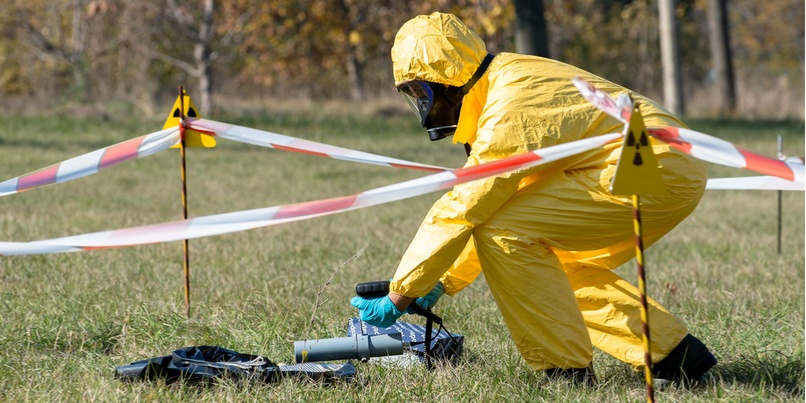 Creating realistic training scenarios that replicate the invisible threat of radiation is a vital and ongoing challenge for CBRNe and HazMat instructors worldwide, whether that training is provided within the context of military training exercises or as a teaching aid for first responders.
Creating realistic training scenarios that replicate the invisible threat of radiation is a vital and ongoing challenge for CBRNe and HazMat instructors worldwide, whether that training is provided within the context of military training exercises or as a teaching aid for first responders.
Most radiation detection instruments are in themselves fairly straight-forward to use. But ensuring that trainees understand readings, changes in units of measurement, shielding, survey, contamination avoidance and decontamination procedures can be difficult.
The skill lies in the CBRNe or HazMat instructor’s ability to create applied, hands-on training scenarios that enable participants to experience all the features of a radiation incident in as life-like a context as possible.
The value of hands-on training - as compared to more traditional, “abstract” classroom teaching methods - is widely acknowledged. Active participation in a learning environment engages a wide variety of learning styles from kinesthetic to visual to auditory; it transforms the role of the educator from that of a one-directional imparter of information to that of a mentor or guide; it offers broader opportunities for the assessment and evaluation of trainees; and it provides an opportunity for participants to combine both theory and practice in the learning process.
Crucially too, hands-on learning has been proven to activate the sensorimotor regions of the brain, as demonstrated in a 2015 study by the UChicago Department of Psychology Human Performance Lab.
The study, which was directed by internationally known mind-body connection expert Professor Sian Beilock, set out to explore the effects of active learning on the brain. And as it discovered, applied learning may benefit students even more than previously realised, adding vital kinetic detail to students’ thinking processes.
Participants in the study were divided into two groups, one that actively took part in a range of practical classroom exercises and the other who simply observed the exercises. As post-testing demonstrated, those who had actively participated in the experiments far outperformed the observation group, both in terms of their understanding of the concepts and their retention of the information.
As Professor Beilock explained, this gives new meaning to the idea of learning.
“In many situations, when we allow our bodies to become part of the learning process, we understand better. Reading about a concept in a textbook or even seeing a demonstration in class is not the same as physically experiencing what you are learning about.”
Relevance for radiation safety training
The findings of the UChicago study also have much relevance for the world of radiation safety training, as borne out by the experience of the Avon and Somerset Constabulary Police Headquarters in their recent CBRN training exercise with the Bristol Police.
In the counter-terrorism exercise, which took place at the Bristol City Football Ground, the Avon and Somerset police were provided with hands-on access to a range of electronic radiation simulators, including Argon’s PlumeSIM system which enables simulated chemical and radiological release across a wide area.
As the exercise leader, Officer Paul Lacey explained, while theoretical classroom teaching provides one element of learning, the addition of CBRN response training simulators introduced a degree of hands-on realism that was as close as possible to the real thing.
And with the use of electronic simulation equipment the trainees were able to realistically carry out their roles without risk of harm or damage to themselves, other participants, their equipment or the environment.
“All the commanders said it was one of the best things we did because everyone - themselves included - were suddenly no longer in exercise mode but thinking ‘it’s happening,’ and going into ‘alert’ mode,” he said.
“People learn better from practical training and that’s why simulators are so good. You’re training not only physically, gaining familiarity with the equipment, but also emotionally and coping with the reactions to a frightening scene.”
As demonstrated by the Avon and Somerset Police exercise, hands-on learning is a vital element of radiation safety training.
And the creation, wherever possible, of practical, hands-on scenarios can have a vitally significant impact on a trainee’s experience of learning, on their capacity to retain crucial life-saving information and on their ability to cope with the unique challenges of Live Incident radiation situations if and when they arise.
